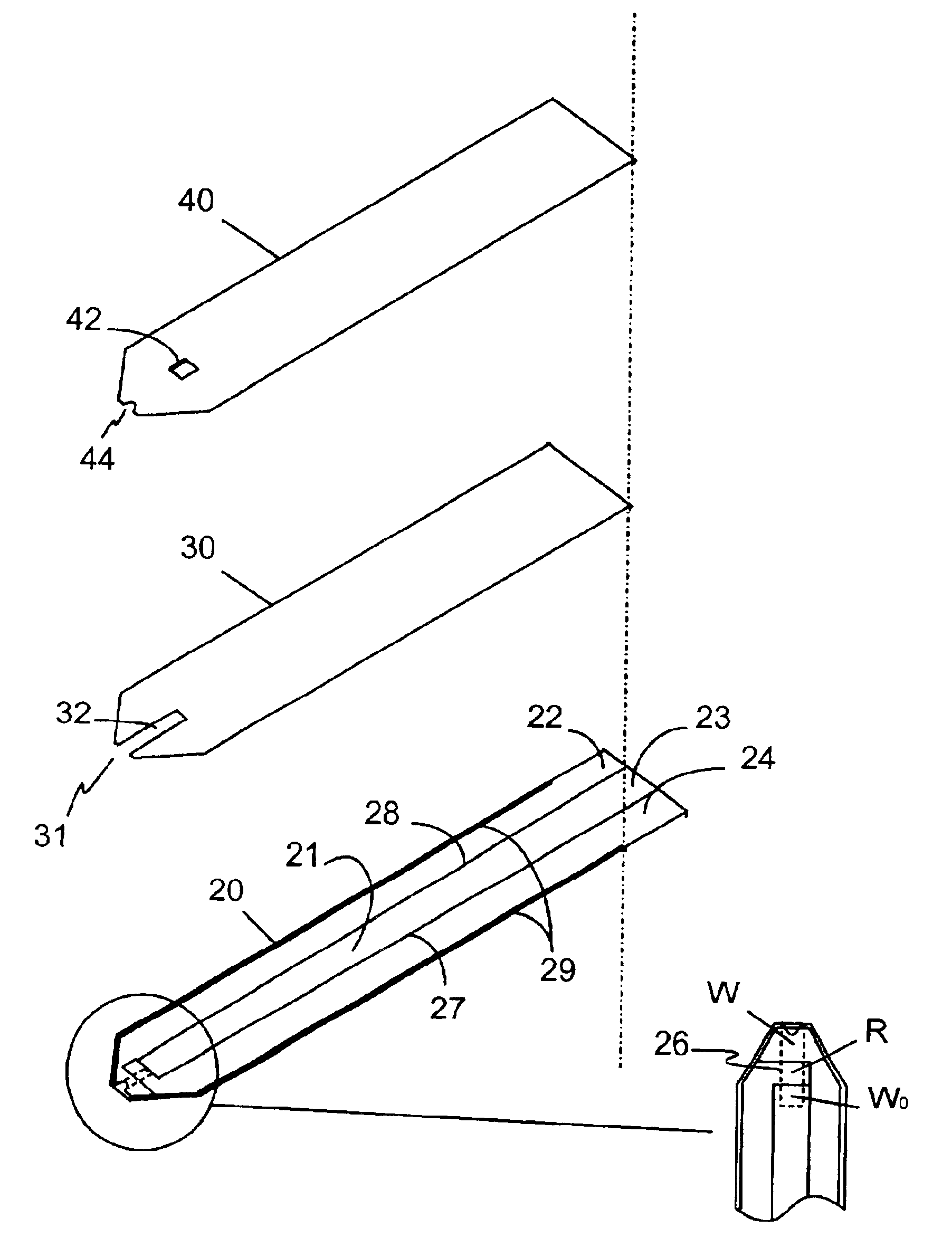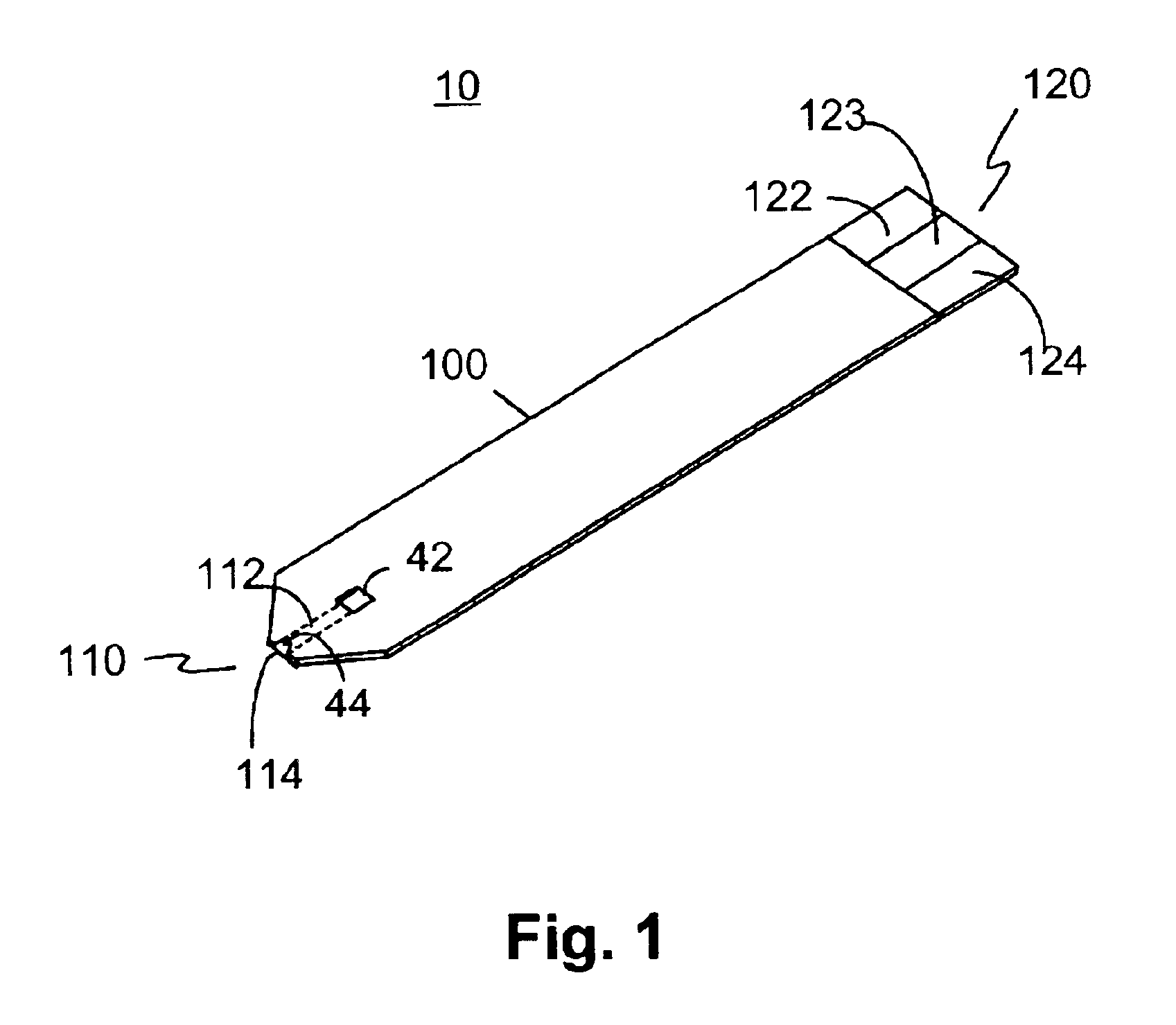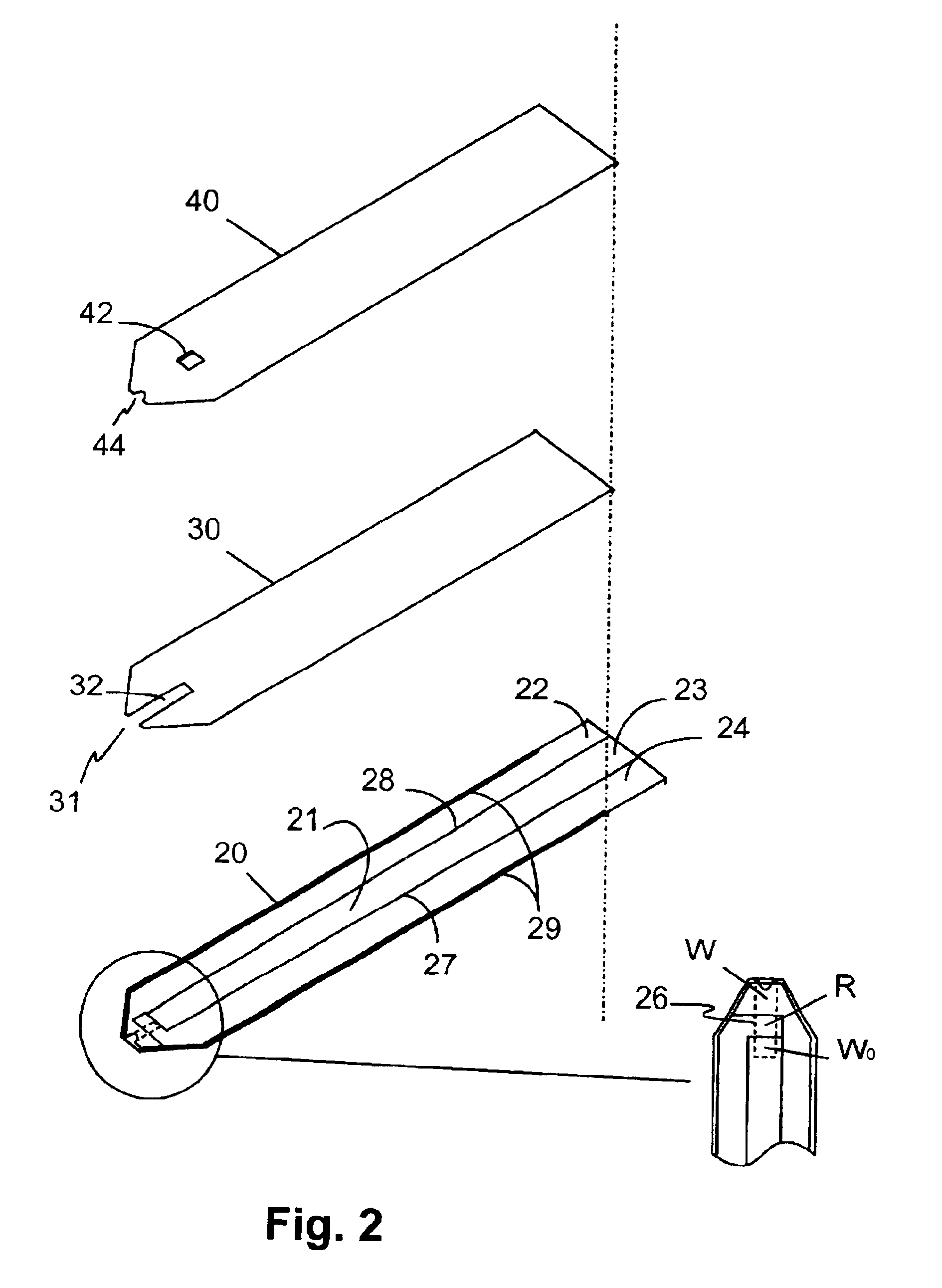Disposable sub-microliter volume biosensor with enhanced sample inlet
a biosensor and sub-microliter technology, applied in the field of electrochemical sensors, can solve the problems of inconvenient procedures, vision loss, kidney failure and vascular diseases, etc., and achieve the effects of convenient sample introduction, short wait time, and wide linear measurement rang
- Summary
- Abstract
- Description
- Claims
- Application Information
AI Technical Summary
Benefits of technology
Problems solved by technology
Method used
Image
Examples
Embodiment Construction
[0030]The preferred embodiment of the present invention is illustrated in FIGS. 1-4. FIG. 1 shows a sensor 10 of the present invention. Sensor 10 has a laminated body 100, a fluid sampling end 110, an electrical contact end 120, and a vent opening 42. Fluid sampling end 110 includes a sample fluid channel 112 between a sampling end aperture 114 and vent opening 42. Sampling end 110 also includes an inlet notch 44. Electrical contact end 120 has three discreet conductive contacts 122,123 and 124.
[0031]Referring now to FIG. 2, laminated body 100 is composed of a base insulating layer 20, a middle layer 30, and a top layer 40. All layers are made of a dielectric material, preferably plastic. Examples of a preferred dielectric material are polyvinyl chloride, polycarbonate, polysulfone, nylon, polyurethane, cellulose nitrate, cellulose propionate, cellulose acetate, cellulose acetate butyrate, polyester, acrylic and polystyrene. Base insulating layer 20 has a conductive layer 21 on whic...
PUM
| Property | Measurement | Unit |
|---|---|---|
| volume | aaaaa | aaaaa |
| volume | aaaaa | aaaaa |
| wt % | aaaaa | aaaaa |
Abstract
Description
Claims
Application Information
 Login to View More
Login to View More - R&D
- Intellectual Property
- Life Sciences
- Materials
- Tech Scout
- Unparalleled Data Quality
- Higher Quality Content
- 60% Fewer Hallucinations
Browse by: Latest US Patents, China's latest patents, Technical Efficacy Thesaurus, Application Domain, Technology Topic, Popular Technical Reports.
© 2025 PatSnap. All rights reserved.Legal|Privacy policy|Modern Slavery Act Transparency Statement|Sitemap|About US| Contact US: help@patsnap.com



